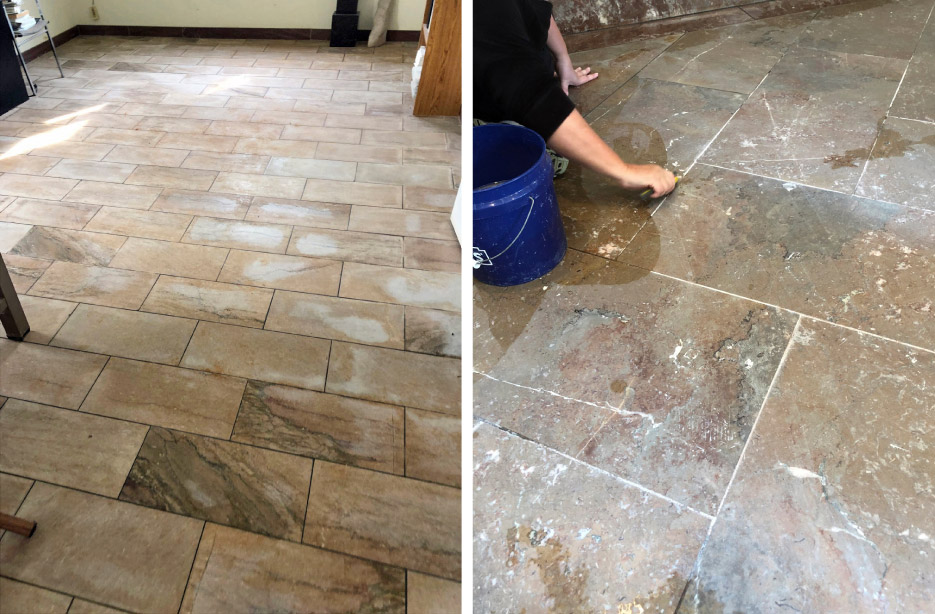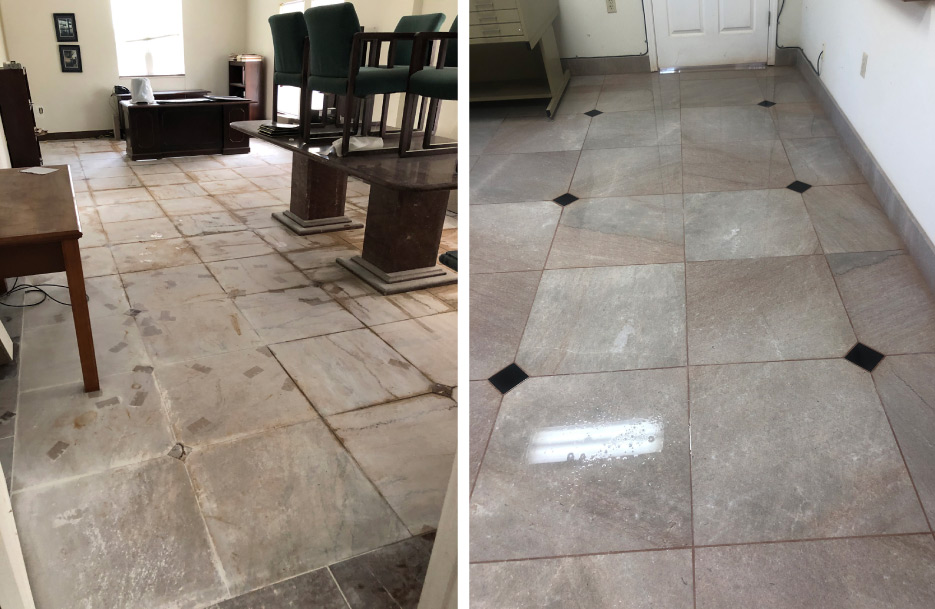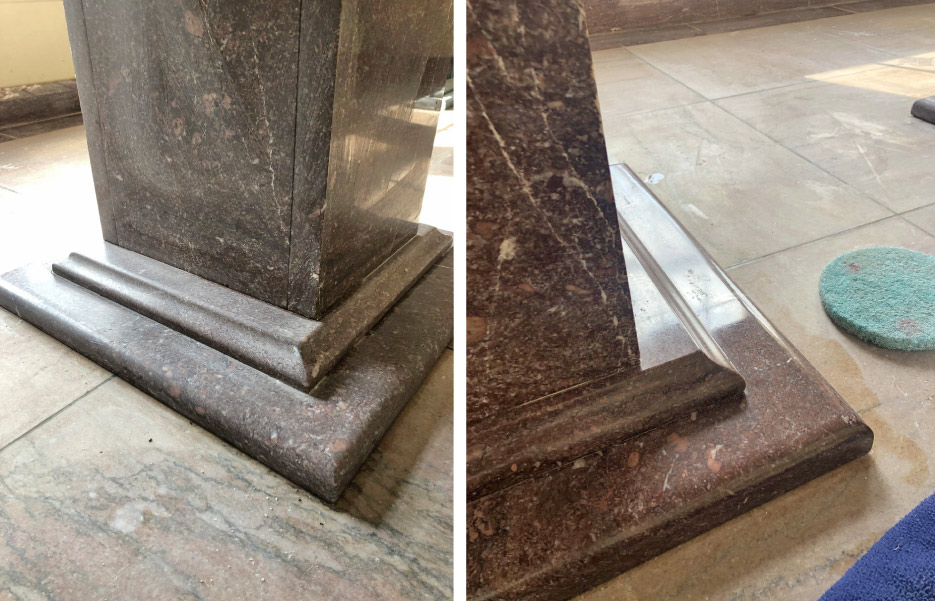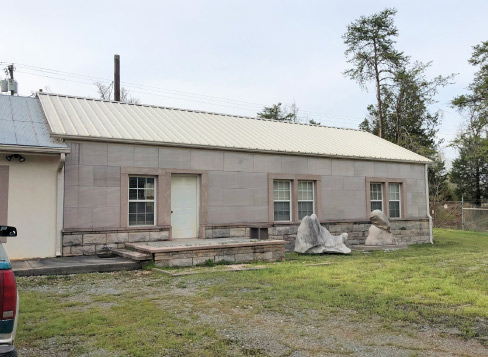Stone Restoration and Maintenance Corner: The Tennessee Marble, Friendsville Quarry Office Gets a Restoration
Bob Murrell
M3 Technologies
Photos by Bob Murrell
As of June 5th, 2020, the M3 Technologies Inc. office in Massachusetts is still officially closed. Here in Knoxville, Tennessee, where I have been operating from my home office, we are slowly re-opening most businesses. Many restaurants, retail stores, and even more importantly, my local CrossFit gym are now open. Of course, most of these are at limited capacity with social distancing required. Unfortunately, because I was eating the same but not working out at my usual 5-6 days per week, I gained about 10 pounds during the closure...
I was reading about the Hong Kong Flu (H3N2 virus) which struck in 1968-1969. There were about 100,000 deaths in the USA and 1,000,000 worldwide. The largest category of victims were people 65 years and older, and those with underlying health issues. There were no major closings of any type, although some schools closed due to absenteeism. Oh, and Woodstock was held during some of the deadliest waves of the pandemic.
I know we are confronting a very serious virus and we must treat it as such. We also must open up the economy again, for everyone’s sake. I am an optimist and believe that, with a common sense approach, we can do it safely. I also believe that we will have some good therapeutics and possibly even a shot or vaccine soon. That’s just my opinion, you’re welcome to adopt it, no charge.
 |
|
Above, left: Back room where the stone floor had been severely etched. Notice different stones and pattern. Above, right: Sometimes this is what the restoration job takes: carefully hand-scrubbing the grout with Majestic Deep Cleaner and a wire brush. |
Recently, Julie with Knoxville Marble Polish received a call from Monica Gawet, who is the owner of The Tennessee Marble Company. It seems the old Friendsville quarry office had been broken into and vandalized a few months prior, and she needed the marble floors and other standing pieces of furniture restored. The office space had been ransacked and sprayed with the onsite fire extinguishers, which consisted of both dry powder and water types, along with no telling what else.
My first consultation with all parties involved was after they had done the initial cleanup. It was still in very bad condition and needed some intense restoration, but since the property was going to be rented, she wanted to keep the project as cost effective as possible. So, a plan based on the “best bang for the buck” thinking, was devised. Of course, there were some caveats that could show up after the job started. These were discussed up front. Basically, if plan A didn’t work as hoped, then plan B would be engaged.
There were several types of Tennessee marble used on the floors. Each room had its own marble and install design style. Various hues of pink and cedar were common throughout the facility. Most were installed polished but now all had become totally etched and dulled.
The chemistry behind the fire extinguisher chemicals– water, and the calcium carbonate of the marble –are somewhat interesting. These chemical cocktails were certainly no friend to the marbles in question, that much is for certain. The dry chemical fire extinguishers were composed of either mono or diammonium phosphate. When water from the other fire extinguishers was sprayed onto either of these phosphates, it formed a dilute phosphoric acid solution. It was this acid solution that was left to dry on the marble surfaces, which caused the extensive etching damage.
Another very interesting observation after the initial cleanup was that the cards from a Rolodex had been scattered everywhere prior to the fire extinguishers being sprayed. These cards acted as protection from the fire extinguisher chemicals and thereby lessened the etching where they had lain. It turns out that these card outline imprints on the floor were indicators of just how bad the etching around them was.
So the main options were discussed, such as honing, honing and polishing, polishing only (which we knew would probably not be sufficient to remove the etching), and possibly some grinding due to picture framing concerns from existing lippage. As I always prescribe, some test areas were needed to select the most effective methods.
After several tests were completed in each of the four main rooms, it was determined that the front entry room was definitely in the worst condition and also had the most lippage. They tried using diamond impregnated pads (dips) starting at 200 grit, which worked well for the back three rooms, but the front room required grinding. Once the back three rooms were honed with 200 grit and 400 grit, they were polished using Majestic 5X powder. They looked very nice, with the exception of some badly etched areas that were worked with 220 and 400 grit diamond hand pads before polishing with the 5X powder.
Keep in mind that costs were purposely meant to be minimized, as there was really no reason to go all out for this project. Therefore, with the exception of the front room, use of the dips and polishing were satisfactory. The front room, however, required grinding, so M3 LT3 50 grit electroplated lippage discs were used to flatten the floor.
 |
|
Above, left: Marble floor after initial cleaning. Notice where the Rolodex cards had given some protection from the etching on the floor. Above, right: Front room floor after restoration with 200 and 400 grit diamond Impregnated pads, and Majestic 5X Gold polishing powder. |
 |
|
Before and After: Above, left, Tennessee Cedar marble conference table base in its faded, etched condition; Above, right, base restored after using dip 200 grit, 400 grit, and Majestic 5X Gold Polishing Powder. |
Once this was accomplished, some M3 ELF3 70 grit series electroplate flexible discs were used to finish the grinding process before honing began. The floor was then honed using M3 Typhoon resins from 50 grit through 200 grit. The floor was now flat and had a nice hone with plenty of color. A small test spot was polished using the 5X but it was decided that this floor would be better suited to remain with the honed finish, and so a 200 grit dip was used to even out the honed look.
Once the honed floor was consistent looking, Majestic Color Enhancing Impregnator was used to darken the stone even further. Then the floor was buffed using a 400 grit dip to remove any excess material. This gave the marble a rich, warm appearance that looked great. The rest of the floors were sealed using Majestic Low Odor Solvent-Based Impregnator. Some Majestic Stone Soap was left behind for the maintenance of the floors.
 |
|
Tennessee Marble, office wing. This modest marble-clad exterior contains a wealth of beautiful and historic marble floors, trim and furnishings.
|
Overall, the project came out very nice, especially considering it was done on a budget.
There were some issues with some of the grout, but it was decided that a deep cleaning with wire brushes and Majestic Deep Cleaning Stripper/Degreaser was the extent of the effort that would be given.
To me, this facility is part of the famed Tennessee Marble history, and a history that I am actually part of. So I take great pride in knowing that it was restored to much of its original condition. That’s one of the many beautiful things about natural stone, it is almost always restorable to original – or even better than original condition.
As always, I recommend submitting a test area to confirm both the results and the procedure prior to starting a stone or hard surface restoration or maintenance project. Also the best way to help ensure success is by partnering with a good distributor, like Braxton-Bragg, that knows the business. They can help with technical support, product purchase decisions, logistics, and other pertinent project information.
I pray you all stay safe and healthy.
Bob Murrell has worked in the natural stone industry for over 40 years and is well known for his expertise in natural stone, tile and decorative concrete restoration and maintenance. He helped develop some of the main products and processes which revolutionized the industry, and is currently the Director of Operations for M3 Technologies.